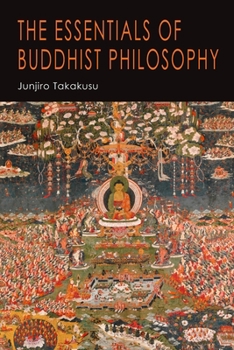The Essentials of Buddhist Philosophy
Select Format
Select Condition 
Book Overview
2022 Reprint of the 1949 Edition. Full facsimile of the original edition and not reproduced with Optical Recognition Software. The Essentials of Buddhist Philosophy by the eminent and prolific Japanese Buddhist scholar Takakusu (1866-1945) largely follows the skeletal design of an introductory overview of Japanese Buddhism by the Kegon monk Gyonen (1240-1321) called The Essentials of the Eight Schools first composed in 1268. It was written for "beginners" (shogakusha) and was widely circulated and used as a basic text in Japan until the Meiji Restoration (1868). Takakusu's work begins with two short chapters (but rather dense for "beginners") on "Indian Background" and "Fundamental Principles of Buddhist Philosophy" from a Japanese Mahayanist perspective. Then follow separate chapters on five of the six "Nara" schools -- Kusha, Jojitsu, Hosso, Sanron [i.e., Madhyamika], and Kegon [Avatamsaka]. The "New" Ritsu school is not examined until the end of the list. Predictably, the Tendai and Shingon schools established in the early 9th century are next in line, followed by Kamakura's Zen, Jodo, and Nichiren schools. (Gyonen briefly notes the Zen and Jodo movements, and Nichiren not at all. In 1268 the mix had not yet jelled.) Takakusu's book provides a substantial index for many names and technical terms; and, perhaps as useful as anything else, (tentative) English equivalents. Also charts, with English, Sanskrit, and kanji, of the 75 dharmas of the Kusha School, and the 100 dharmas of the Hosso school. Remains a useful work to this day. Cited by Robert E. Morrell in an Amazon Review for this title on May 19, 2005






